JAN 29, 2024
Weighing a black hole in the early universe
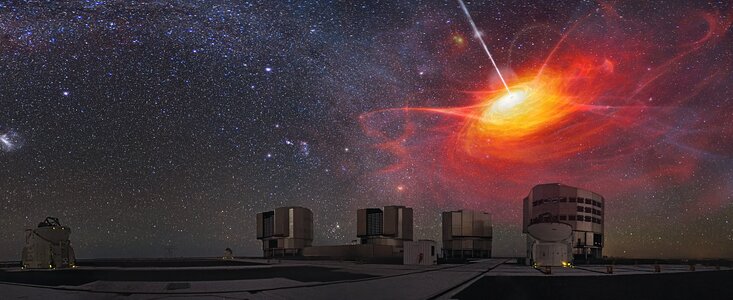
A team of international astronomers, including researchers from the KU Leuven Institute of Astronomy, has determined the mass of a black hole in the center of a galaxy formed ‘only’ 2 billion years after the Big Bang, so in the early beginnings of our 13.7 billon years-old universe. Even though the black hole has a mass larger than 300 million suns, the black hole is actually less heavy than astronomers had expected, given the mass of its host galaxy. This indicates an unexpected delay between the growth of the galaxy and its central black hole. The astronomers managed to peer back in time using the upgraded GRAVITY-instrument at the ESO Very Large Telescope Interferometer in Chile.
For more information:
- KU Leuven news: https://fys.kuleuven.be/ster/news/2024/weighing-a-black-hole-in-the-early-universe
- ESO news: https://www.eso.org/public/announcements/ann24002/
For more information:
- KU Leuven news: https://fys.kuleuven.be/ster/news/2024/weighing-a-black-hole-in-the-early-universe
- ESO news: https://www.eso.org/public/announcements/ann24002/
APR 2, 2021
Launch of Europe's largest astronomy network
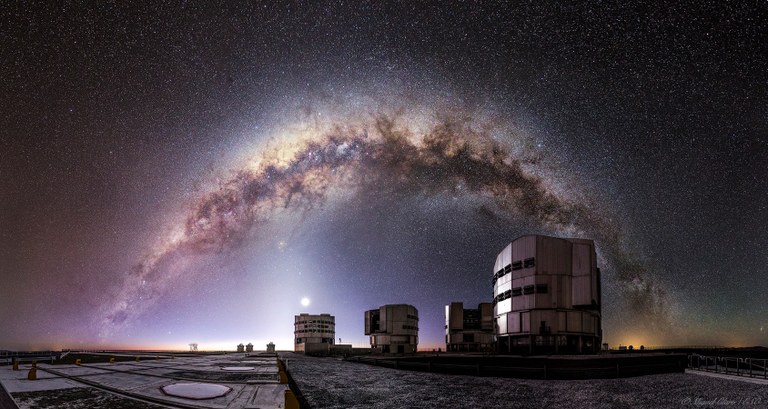
Until now, Europe has had two major collaborative networks for ground-based astronomy, one in the optical wavelength domain and the other in the radio-wave domain. OPTICON and RadioNet have now come together to form Europe’s largest ground-based astronomy collaborative network. Launched with funding to the tune of €15 million under the H2020 programme, the project aims to harmonise observational methods and tools, and provide access to a wider range of astronomical facilities. With the new ORP funding, the Institute of Astronomy will develop a new VLTI observing mode dedicated to exoplanet research, support the VLTI expertise centres network's activities, and gather the whole VLTI community in Leuven in 2023.
For more information:
- KU Leuven news: https://fys.kuleuven.be/ster/news/2021/launch-of-europes-largest-astronomy-network
- CNRS news: https://www.cnrs.fr/en/launch-europes-largest-astronomy-network
For more information:
- KU Leuven news: https://fys.kuleuven.be/ster/news/2021/launch-of-europes-largest-astronomy-network
- CNRS news: https://www.cnrs.fr/en/launch-europes-largest-astronomy-network
APR 25, 2018
Stellar Dust Survey Paves Way for Exoplanet Missions
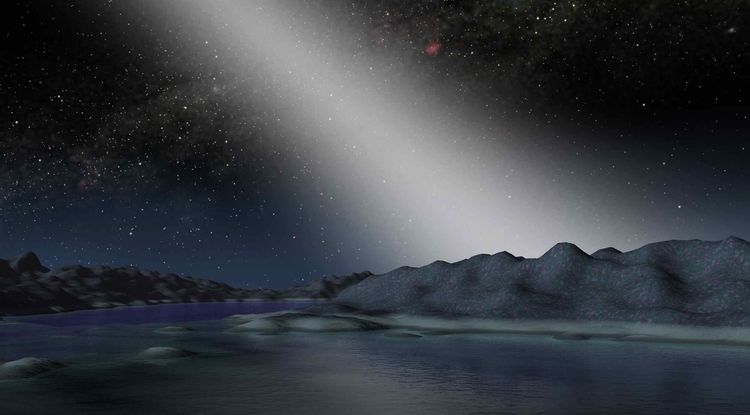
Veils of dust wrapped around distant stars could make it difficult to image potentially habitable planets in those star systems. The Hunt for Observable Signatures of Terrestrial Systems, or HOSTS, survey was tasked with learning more about the effect of dust on the search for new worlds. The goal is to help guide the design of future planet-hunting missions. In a new paper published in the Astrophysical Journal, we have reported on the survey’s initial findings. Using the Large Binocular Telescope Interferometer, or LBTI, on Mount Graham in Arizona, the HOSTS survey determines the brightness of warm dust floating in the orbital planes of other stars (called exozodiacal dust). In particular, HOSTS has studied dust in nearby stars’ habitable zones, where liquid water could exist on the surface of a planet. The LBTI is five to 10 times more sensitive than the previous telescope capable of detecting exozodiacal dust, the Keck Interferometer Nuller. Among the findings detailed in the new paper, we report that a majority of Sun-like stars do not possess high levels of dust -- good news for future efforts to study potentially-habitable planets around those stars.
For more information:
- ApJ paper: https://arxiv.org/abs/1803.11265
- NASA news: https://www.nasa.gov/feature/jpl/stellar-dust-survey-paves-way-for-exoplanet-missions
- UoA news: https://uanews.arizona.edu/story/ualed-nasa-survey-seen-steppingstone-astronomy
For more information:
- ApJ paper: https://arxiv.org/abs/1803.11265
- NASA news: https://www.nasa.gov/feature/jpl/stellar-dust-survey-paves-way-for-exoplanet-missions
- UoA news: https://uanews.arizona.edu/story/ualed-nasa-survey-seen-steppingstone-astronomy
MAY 10, 2017
Waves of lava seen in Io’s largest volcanic crater
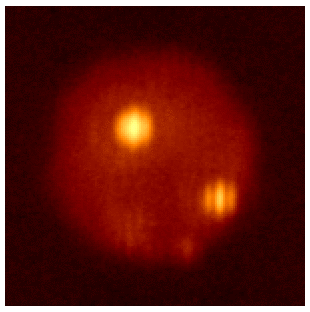
Taking advantage of a rare orbital alignment between two of Jupiter’s moons, Io and Europa, we have obtained an exceptionally detailed map of the largest lava lake on Io, the most volcanically active body in the solar system.
On March 8, 2015, Europa passed in front of Io, gradually blocking out light from the volcanic moon (see animation on the left). Because Europa’s surface is coated in water ice, it reflects very little sunlight at infrared wavelengths, allowing us to accurately isolate the heat emanating from volcanoes on Io’s surface. The infrared data showed that the surface temperature of Io’s massive molten lake steadily increased from one end to the other, suggesting that the lava had overturned in two waves that each swept from west to east at about a kilometer (3,300 feet) per day.
For more information:
- NAture paper: https://www.nature.com/articles/nature22339
- Berkeley News: http://news.berkeley.edu/2017/05/10/waves-of-lava-seen-in-ios-largest-volcanic-crater/
- Forbes: https://www.forbes.com/sites/briankoberlein/2017/05/10/a-jovian-eclipse-reveals-lava-lakes-on-io/#3ee453f9746e
On March 8, 2015, Europa passed in front of Io, gradually blocking out light from the volcanic moon (see animation on the left). Because Europa’s surface is coated in water ice, it reflects very little sunlight at infrared wavelengths, allowing us to accurately isolate the heat emanating from volcanoes on Io’s surface. The infrared data showed that the surface temperature of Io’s massive molten lake steadily increased from one end to the other, suggesting that the lava had overturned in two waves that each swept from west to east at about a kilometer (3,300 feet) per day.
For more information:
- NAture paper: https://www.nature.com/articles/nature22339
- Berkeley News: http://news.berkeley.edu/2017/05/10/waves-of-lava-seen-in-ios-largest-volcanic-crater/
- Forbes: https://www.forbes.com/sites/briankoberlein/2017/05/10/a-jovian-eclipse-reveals-lava-lakes-on-io/#3ee453f9746e
NOVEMBER 18, 2015
Scientists caught a new planet forming for the first time ever
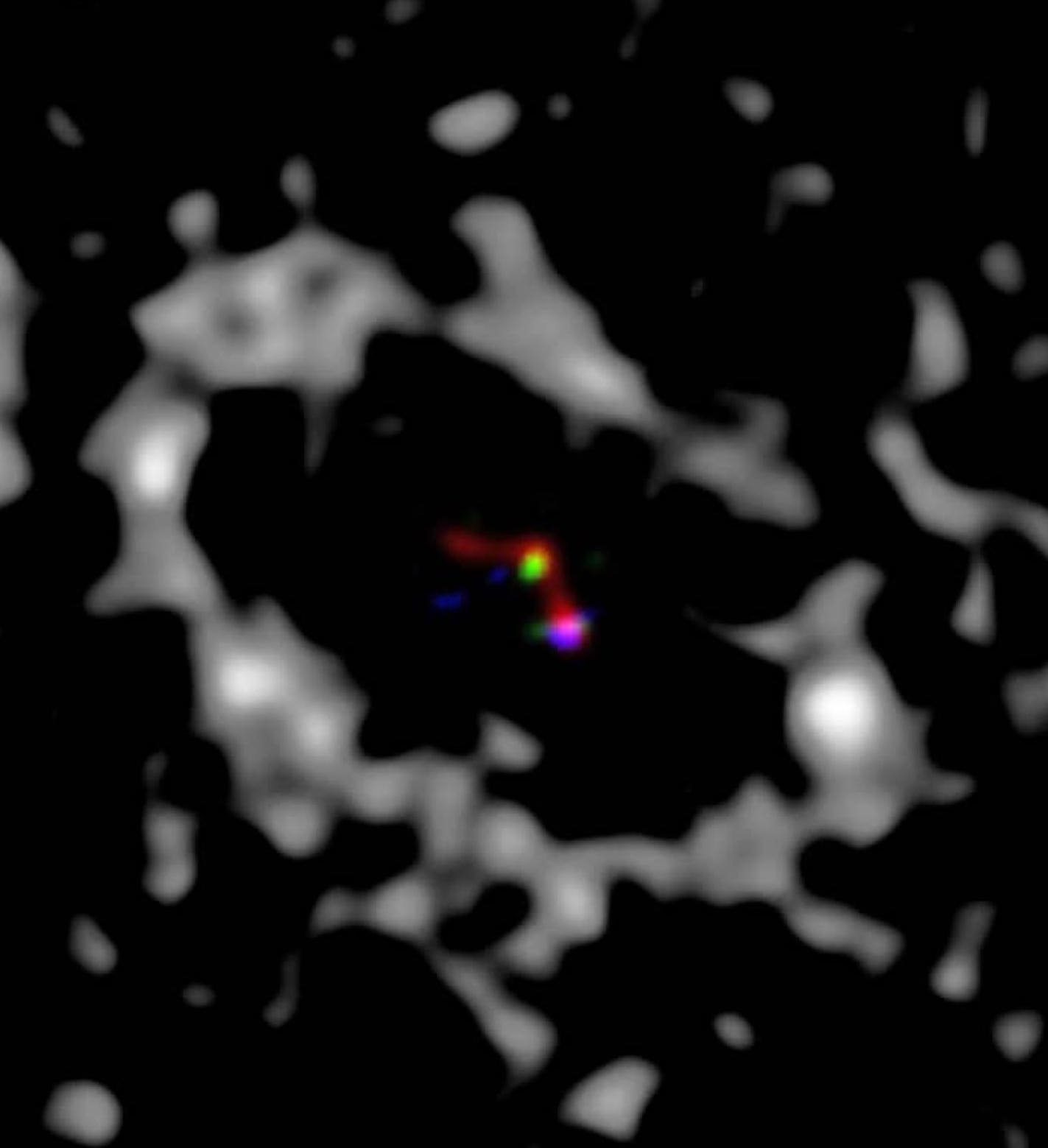
For the first time, we have observed a planet being formed and have captured images of dust and gas particles accumulating together
to make a protoplanet in a distant solar system. The phenomenon was observed in the solar system surrounding a star called LkCa 15, located
450 light-years away from Earth. Catching a planet in the making is an exciting first because, of the nearly 3500 exoplanets we’ve so far
identified, none are in the process of formation. Observations like these are crucial to test planet formation theories and improve our
understanding of planet formation, which is still uncertain today.
For more information:
- Nature paper: https://www.nature.com/articles/nature15761
- Nature podcast: https://www.nature.com/nature/podcast/v527/n7578/nature-2015-11-19.html
- Washington Post : https://www.washingtonpost.com/news/speaking-of-science/wp/2015/11/18/scientists-caught-a-new-planet-forming-for-the-first-time-ever/?utm_term=.90310db04f67
- Mashable: https://mashable.com/2015/11/18/alien-planets-formation/#9oex2T7Bjuq7
For more information:
- Nature paper: https://www.nature.com/articles/nature15761
- Nature podcast: https://www.nature.com/nature/podcast/v527/n7578/nature-2015-11-19.html
- Washington Post : https://www.washingtonpost.com/news/speaking-of-science/wp/2015/11/18/scientists-caught-a-new-planet-forming-for-the-first-time-ever/?utm_term=.90310db04f67
- Mashable: https://mashable.com/2015/11/18/alien-planets-formation/#9oex2T7Bjuq7
APRIL 20, 2015
An image of a whole planetary system
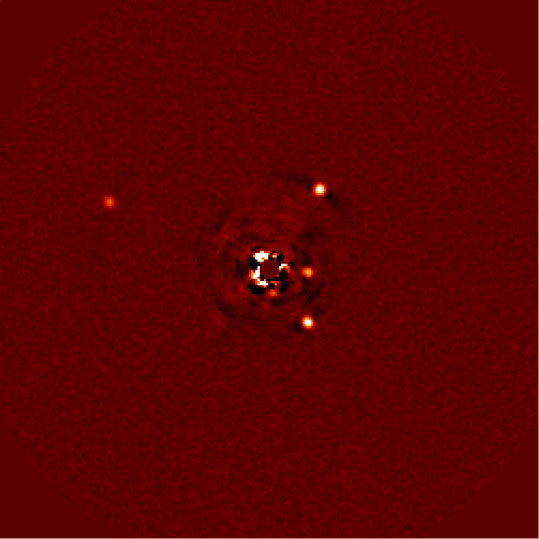
Taking advantage of the unprecedented sensitivity of the Large Binocular Telescope in southeastern Arizona, we have obtained the first results from the LEECH exoplanets survey. The findings reveal new insights into the architecture of HR8799,
a "scaled-up" version of our solar system 130 light-years from Earth. We have probed deeper than before into a planetary system 130 light-years from Earth. The observations mark the first results of a new exoplanet survey called LEECH
(LBT Exozodi Exoplanet Common Hunt). The planetary system of HR8799, a young star only 30 million years old, was the first to be directly imaged, with three planets found in in 2008 and a fourth one in 2010.
For more information:
- A&A paper: https://www.aanda.org/articles/aa/abs/2015/04/aa25185-14/aa25185-14.html
- Max Planck Society: http://www.mpia.de/news/science/2015-05-hr8799
- LBTO: http://www.lbto.org/leech-hr8799.html
For more information:
- A&A paper: https://www.aanda.org/articles/aa/abs/2015/04/aa25185-14/aa25185-14.html
- Max Planck Society: http://www.mpia.de/news/science/2015-05-hr8799
- LBTO: http://www.lbto.org/leech-hr8799.html
APRIL 30, 2015
Lava Lake on Moon of Jupiter Revealed in Remarkable Detail
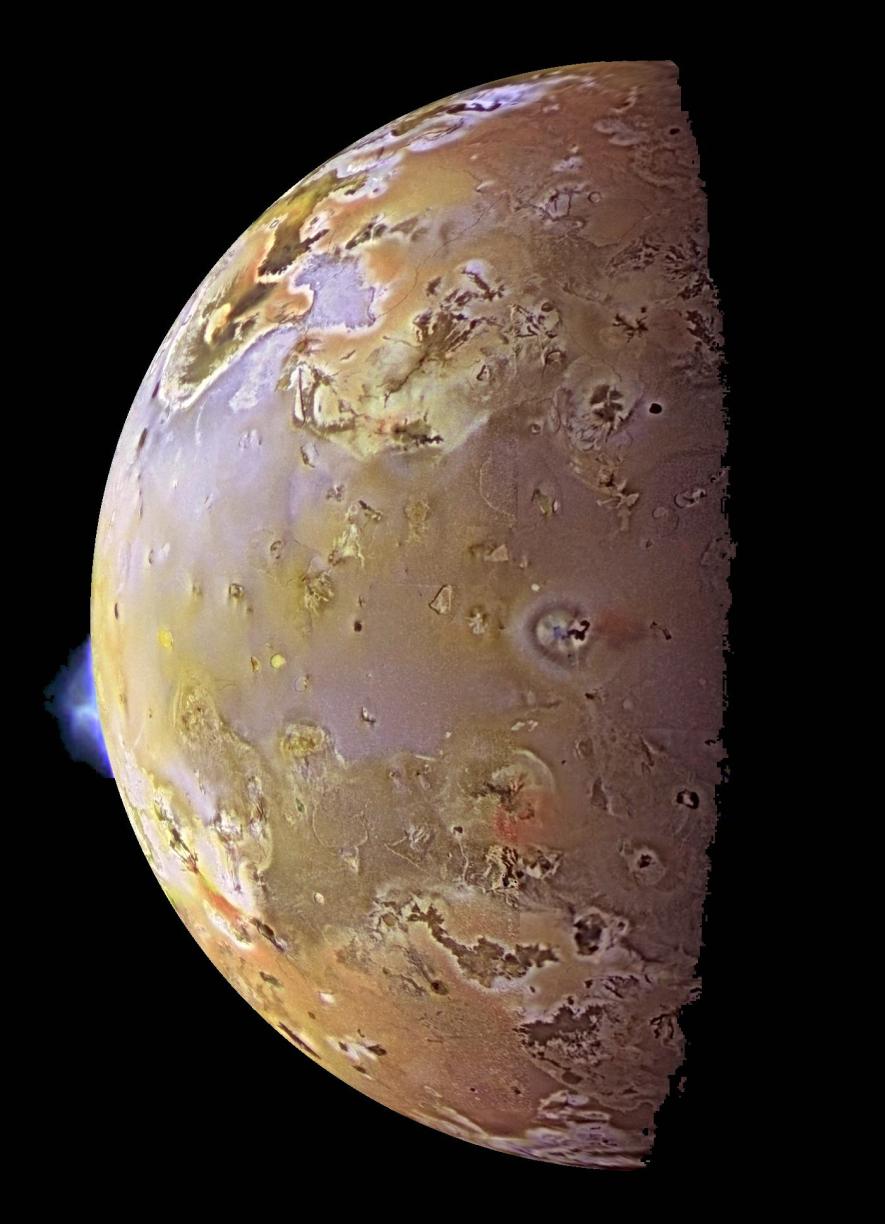
For the first time ever, we have been able to capture detailed images of the heat rising from an active volcano on another body in the solar system. Using its twin 8.4-meter mirrors, the Large Binocular telescope observatory in Arizona managed
to spy on a large lava lake on Jupiter’s moon Io, located some 500 million miles (800 million kilometers) away. The innermost moon of the gas giant, which is slightly larger than Earth’s own moon, is considered the most geologically
active body in the entire solar system. At least 300 volcanic structures dot its surface. The largest of these features is a volcanic pit named after Loki, the Norse trickster god. The depression is filled with a sulfur-encrusted
lake measuring around 125 miles (200 kilometers) across. The Voyager 1 spacecraft first discovered Io’s volcanism back on March 5, 1979, when it barnstormed the Jovian moon and snapped dramatic images
of a giant, nearly 200-mile-tall plume (300 kilometers) rising into space, later revealed to be emanating from Loki.
For more information:
- AJ paper: http://iopscience.iop.org/article/10.1088/0004-6256/149/5/175/meta
- National Geographic: https://news.nationalgeographic.com/2015/04/150430-lava-lake-loki-binocular-telescope-science-astronomy/
- LBTO: http://www.lbto.org/loki-fizeau-2015.html
For more information:
- AJ paper: http://iopscience.iop.org/article/10.1088/0004-6256/149/5/175/meta
- National Geographic: https://news.nationalgeographic.com/2015/04/150430-lava-lake-loki-binocular-telescope-science-astronomy/
- LBTO: http://www.lbto.org/loki-fizeau-2015.html
JANUARY 20, 2015
Telescope To Seek Dust Where Other Earths May Lie
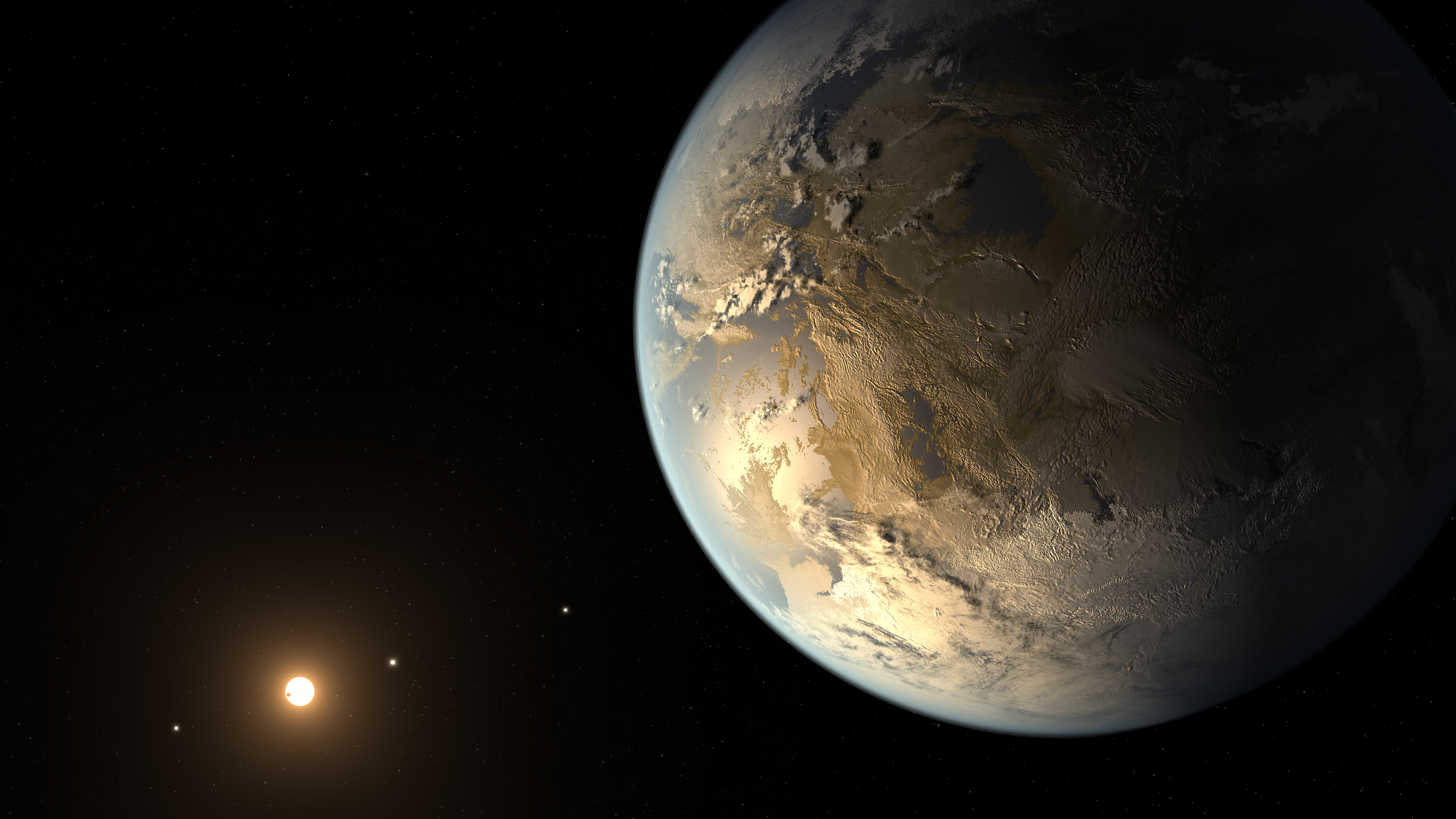
The NASA-funded Large Binocular Telescope Interferometer, or LBTI, has completed its first study of dust in the "habitable zone" around a star, opening a new door to finding planets like Earth.
Dust is a natural byproduct of the planet-formation process, but too much of it can block our view of planets. The findings will help in the design of future space missions that have the goal of
taking pictures of planets similar to Earth, called exo-Earths.
For more information:
- ApJ paper: http://iopscience.iop.org/article/10.1088/0004-637X/799/1/42
- NASA/JPL: https://www.jpl.nasa.gov/news/news.php?feature=4450
- ULiege: https://www.uliege.be/cms/c_5600635/fr/suivre-des-trainees-de-poussiere-a-la-decouverte-d-autres-planetes
For more information:
- ApJ paper: http://iopscience.iop.org/article/10.1088/0004-637X/799/1/42
- NASA/JPL: https://www.jpl.nasa.gov/news/news.php?feature=4450
- ULiege: https://www.uliege.be/cms/c_5600635/fr/suivre-des-trainees-de-poussiere-a-la-decouverte-d-autres-planetes
NOVEMBER 3, 2014
VLTI Detects Exozodiacal Light
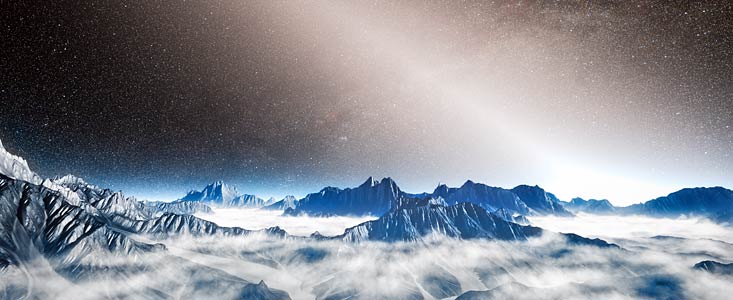
By using the full power of the Very Large Telescope Interferometer, we have discovered exozodiacal light close to the habitable zones around nine nearby stars.
This light is starlight reflected from dust created as the result of collisions between asteroids, and the evaporation of comets. The presence of such large
amounts of dust in the inner regions around some stars may pose an obstacle to the direct imaging of Earth-like planets in the future.
For more information:
- A&A paper: http://www.eso.org/public/archives/releases/sciencepapers/eso1435/eso1435a.pdf
- ESO: http://www.eso.org/public/news/eso1435/
For more information:
- A&A paper: http://www.eso.org/public/archives/releases/sciencepapers/eso1435/eso1435a.pdf
- ESO: http://www.eso.org/public/news/eso1435/
JUNE 6, 2013
Astronomers Gear Up to Discover Earth-like Planets
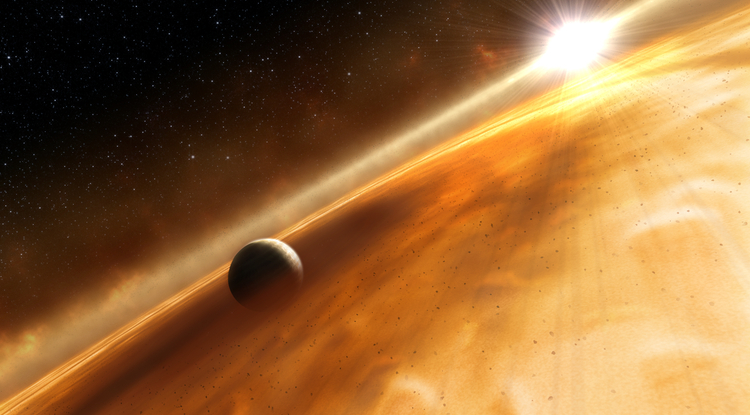
As part of an international team of exoplanets hunters, we are developing a technique to detect faint dust clouds around other stars, many of which might hide Earth-like planets. Funded by NASA, our team
is in the middle of carrying out tests to demonstrate the feasibility of these observations using both apertures of the Large Binocular Telescope, or LBT, in Arizona. The project aims at determining
how difficult it would be to achieve the desired results before committing to a billion-dollar space telescope mission.
For more information:
- Astrobiology: http://astrobiology.com/2013/06/astronomers-gear-up-to-discover-earth-like-planets.html
- University of Arizona: https://uanews.arizona.edu/story/astronomers-gear-up-to-discover-earth-like-planets
For more information:
- Astrobiology: http://astrobiology.com/2013/06/astronomers-gear-up-to-discover-earth-like-planets.html
- University of Arizona: https://uanews.arizona.edu/story/astronomers-gear-up-to-discover-earth-like-planets
JUNE 6, 2013
Dust in the neighborhood of stellar habitable zones
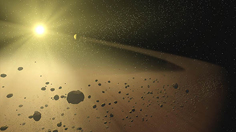
Our team, which includes scientists from the Paris Observatoryaris Observatory, Grenoble Observatory, the Bordeaux Observatory, and Liège University has detected the so-called “exo-zodiacal” hot dust clouds around many stars
similar to the Sun. These observations highlight the universality of the phenomenon, which until now was believed to be limited to the Solar System and to a few other rare stars. This work emphasizes the key role played
by the evaporation of exocomets, for the continuous supply of hot dust, and heralds new indirect tests for the presence of planets around these stars.
For more information:
- A&A paper: https://orbi.uliege.be/handle/2268/149458
- University of Paris: https://www.obspm.fr/dust-in-the-neighborhood-of-stellar-habitable.html?lang=en
For more information:
- A&A paper: https://orbi.uliege.be/handle/2268/149458
- University of Paris: https://www.obspm.fr/dust-in-the-neighborhood-of-stellar-habitable.html?lang=en